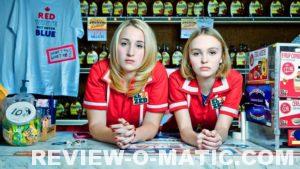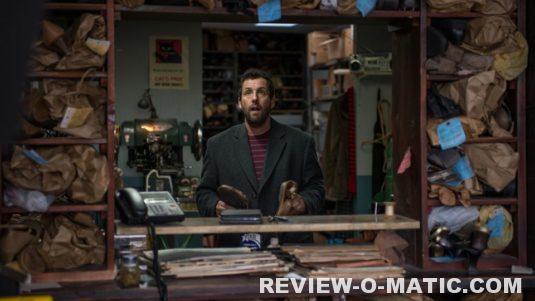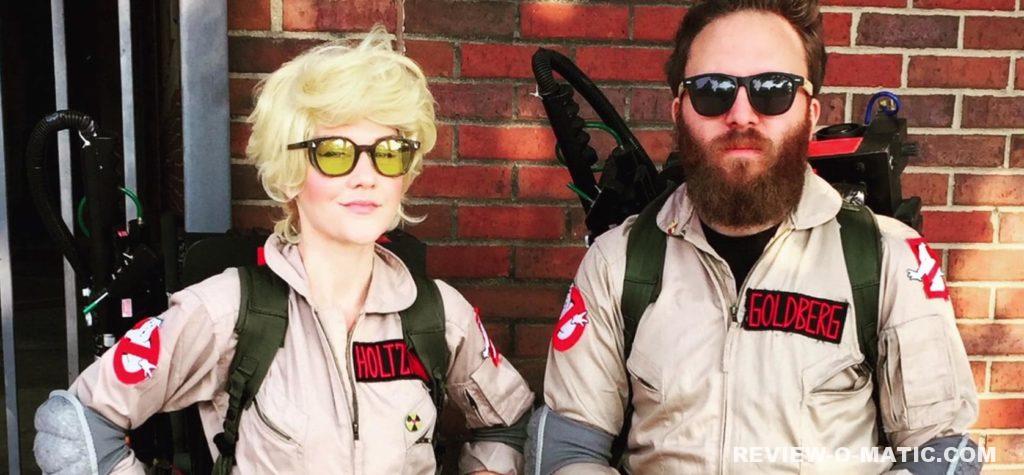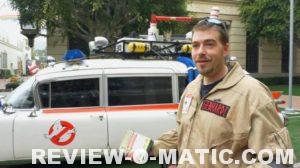Yoga Hosers (2016)
October 29th, 2016At what point do you stop apologizing for your idols?
I was 21-years-old when Kevin Smith released Clerks, a film that equally represented twenty-somethings trying to find their place in the world and independent, DIY filmmakers trying to find their place in the market. In the 20+ since we met Dante and Randall, Smith’s career has seen more ups and downs than Jay and Silent Bob in a seedy New Jersey strip club. Each time Smith announces he’s finally going to put his “View Askewniverse” characters to rest, we get films like Tusk and Red State and Cop Out and he goes back to his well of familiarity. The fact that Smith announced Clerks III and Mallrats II (which has since morphed into a television series pitch) after a series of box office bombs is no coincidence.

Yoga Hosers the second of Smith’s loosely-connected “True North” trilogy, three films that take place in Canada. There aren’t a lot of establishing shots to place the action in Canada, but fortunately everybody says “eh,” “zed,” and “aboot” (about) enough times to convince Americans the action takes place north of the border. More people say “aboot” in this film than utter the f-bomb in all of Kevin Smith’s previous films combined.
The film opens with the fifteen-year-old Colleens — Colleen C. (Lily-Rose Depp) and Colleen M. (Harley Quinn Smith) — performing a cover version of Anthrax’s “I’m the Man” in the back room of the convenient store they work in. Anthrax released “I’m the Man” 29 years ago in 1987, 14 years before the Colleens were born. We also meet Ichabod, their drummer and friend who promptly disappears for the rest of the film. Why are the girls enamored with an 80s thrash metal band? (Their band is called “Glamthrax”.) Why are two 15-year-old girls allowed to work alone in a convenient store? Nothing in this scene makes sense, and yet ten minutes later you realize this scene makes more sense than anything else in the film.
Kevin Smith smokes a lot of pot, and tells anyone who will listen about how much pot he smokes. Smith brags about all the things he has written and directed while smoking pot. None of them have been financially successful. When the New York Post asks you to smoke less weed, it might be time to cut back. I don’t know why I feel compelled to tell you Kevin Smith smokes a lot of dope. This film is about an army of foot-tall Nazi bratwursts (“Bratzis”) that kill people by climbing into their butts. Without a bong in hand, the plot leaves something to be desired.
The Colleens lose their phones (“that’s so basic!“) and are forced to work in Colleen C.’s dad’s convenient store instead of attending a “senior party” before the plot starts to roll. Normally a film this bad with an 88 minute running time would seem to drag, but today, the day after watching it, it seems like it was only 15 minutes long. After surviving an attack by high school senior devil worshipers, the girls go on to fight Bratzis and Andronicus Arcane, the head of the Bratzis. Arcane has also built a ten-foot-tall Golem Goalie to “kill all the critics of his previous work.” I can only imagine film critics sitting in the theater and watching this film raising their hands, offering to be first. To quote Holden from Smith’s 2001 film Jay and Silent Bob Strike Back, “When, Lord when? When’s gonna be my time?”
Smith has gone on record as calling his previous movies a “collection of dick and fart jokes,” and I’m sure the idea of sausages going up people’s butts seems really witty to a guy who smokes more green than Snoop Dogg. When Dante in Clerks whined, “I’m not even supposed to be here today,” we knew who the film was written for: the Dantes of the world, those of us working and thinking and wanting to go somewhere and going nowhere. Yoga Hosers wasn’t written for the Dantes, but for the Jays — Silent Bob’s drug-dealing burned out cohort. Jay, with a super-sized bong in hand and few remaining brain cells, would no doubt find miniature talking Nazi sausages hilarious.
In a recent interview with the Nerdist, Kevin Smith revealed his new business model. He can make terrible movies, tour around the country with them doing pre-and-post-show Q&As, and make his money back. If you’re fortunate enough to catch one of these shows, I recommend it — Smith remains a good stand up speaker and story teller, and him talking about this film is probably more interesting than this film. But without an accompanying appearance by the filmmaker, the rest of us are left with just the film, and a feeling of being hosed.
 ”
”

![maxresdefault[1]](https://review-o-matic.com/wp-content/uploads/2016/07/maxresdefault1-300x169.jpg)
![518BM-quKGL._SY344_BO1,204,203,200_[1]](https://review-o-matic.com/wp-content/uploads/2016/06/518BM-quKGL._SY344_BO1204203200_1.jpg) So, I’m that guy — the guy who clicks on every one of those online quizzes like “10 Things You Didn’t Know About Star Wars” and “10 Secret Star Wars Easter Eggs” and laughs. Questions about how many languages C-3P0 speaks, what cell block Princess Leia was held in, and Luke’s call sign number make me roll my eyes. That being said, I still click on them. I can’t help myself!
So, I’m that guy — the guy who clicks on every one of those online quizzes like “10 Things You Didn’t Know About Star Wars” and “10 Secret Star Wars Easter Eggs” and laughs. Questions about how many languages C-3P0 speaks, what cell block Princess Leia was held in, and Luke’s call sign number make me roll my eyes. That being said, I still click on them. I can’t help myself!
![720x405-twisted-Sister[1]](https://review-o-matic.com/wp-content/uploads/2016/05/720x405-twisted-Sister1.jpg)

![Movie-Guide-Me-Film-Review-A-million-ways-to-die-in-the-west-seth-macfarlane1[1]](https://review-o-matic.com/wp-content/uploads/2016/05/Movie-Guide-Me-Film-Review-A-million-ways-to-die-in-the-west-seth-macfarlane11-e1463332450992.jpg)
![pee-wees-big-holiday[1]](https://review-o-matic.com/wp-content/uploads/2016/03/pee-wees-big-holiday1.jpg)
![2-16-16-pee-wees-big-holiday[1]](https://review-o-matic.com/wp-content/uploads/2016/03/2-16-16-pee-wees-big-holiday1.png)